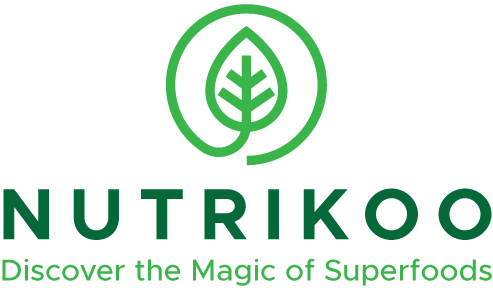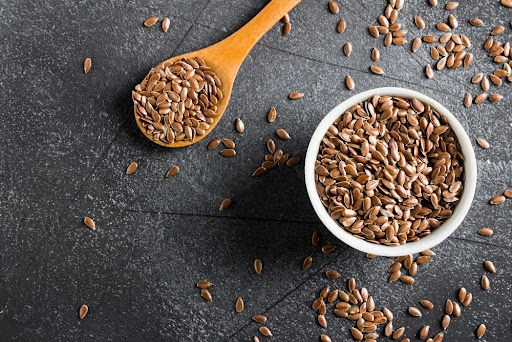Thousands of years ago, long before “superfoods” became a trendy word, ancient civilizations already cherished a tiny seed that promised health, strength, and beauty. In Mesopotamia, flax was woven into linen for royalty and used as food for warriors. The Egyptians wrapped their mummies in flax fibers, believing it symbolized purity. Even Hippocrates, the father of medicine, recommended flax seed for abdominal pains. Today, this age-old seed is making a remarkable comeback in our kitchens, smoothies, and health diets.
Tiny but Mighty – What Do Flax Seeds Look Like?
Flax seeds (Linum usitatissimum) are small, flat, and oval with a smooth, glossy coat that makes them look almost like polished gems. They come in two colors—golden yellow and brown—both equally powerful in nutrition. Their size may be no bigger than a grain of rice, but each seed is densely packed with fiber, protein, and healthy oils.
🌍 From Ancient Fields to Global Kitchens – The Origin Story
Flax is one of humanity’s oldest cultivated crops, first grown in the Fertile Crescent around 9,000 years ago. Ancient Egyptians treasured it for both food and textile use, while Greek athletes consumed it to enhance stamina. From Mesopotamia, it spread across Europe and Asia, eventually reaching India and China, where it was absorbed into local medicine and cuisine. Today, Canada leads global production, followed by Russia, Kazakhstan, China, and India.
Two Faces of the Same Seed – Varieties of Flax
- Brown Flax Seeds – rich in flavor with a stronger, nuttier taste.
- Golden Flax Seeds – lighter in taste and appearance, often chosen for baked goods or where a milder flavor is preferred.
Despite their color differences, both varieties deliver almost the same nutritional punch, offering fiber, omega-3s, and lignans.
🍵 Eat It Your Way – How to Use Flax Seeds
Flax seeds are extremely versatile:
- Ground flax is the most popular form, as whole seeds often pass undigested.
- Soaked in water, they form a gel-like consistency that supports digestion.
- Sprinkled on salads, cereals, or smoothies, they add crunch and nutrients.
- In baking, flax can replace eggs in vegan recipes (flax egg).
- Flax oil, cold-pressed, is great for salad dressings and smoothies but not for frying.
- Traditional medicine uses flax to soothe inflammation, aid digestion, and improve stamina.
⚠️ Handle With Care – What Not to Do
- Don’t eat too many raw flax seeds—in excess, they may release harmful compounds.
- Avoid overheating flax oil, as it quickly loses its nutritional properties.
- Consult a doctor if you’re pregnant, breastfeeding, or on blood-thinning medications.
- Drink water with flax, since the fiber swells and may otherwise cause discomfort.
✅ Health on Your Plate – The Benefits of Flax Seeds
Flax seeds are a nutrient powerhouse:
- Heart Hero – omega-3 fatty acids help lower cholesterol and protect the heart.
- Hormone Helper – lignans balance estrogen levels, easing menopausal symptoms.
- Gut Guardian – soluble fiber regulates digestion and relieves constipation.
- Weight Watcher’s Friend – keeps you fuller for longer, reducing hunger cravings.
- Beauty Booster – nourishes skin, fights dryness, and strengthens hair.
❌ Not All Sunshine – Possible Drawbacks
Like any food, flax seeds come with cautions:
- Overeating may cause bloating, gas, or diarrhea.
- Raw flax seeds in large amounts may be mildly toxic.
- Medication interactions can happen with hormone therapy or blood thinners.
- Flaxseed oil spoils easily, so it must be stored in a cool, dark place.
Sacred, Symbolic, and Healing – Flax in Culture
Flax has always been more than just food:
- In Ayurveda, Alsi dana is valued for improving stamina and balancing body energies.
- In Ancient Egypt, flax symbolized purity and was used in religious clothing and mummy wrappings.
- Greek healers praised its digestive benefits, while Romans spread its cultivation across Europe.
- Today, flax remains a key ingredient in Ayurvedic treatments, naturopathy, and plant-based diets.
🌟 Final Scoop
From the pyramids of Egypt to modern health stores, flax seeds have traveled a long journey of healing, nourishment, and tradition. Their small size hides their mighty power, making them one of the most enduring superfoods in human history. Adding flax seeds to your meals isn’t just a wellness choice—it’s a way of connecting with an ancient tradition that still thrives today.

